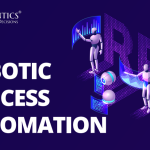Data Governance is important now that organizations can capture massive amounts of both internal and external data. Data should be usable, accessible and protected.
All organizations, regardless of the size and industry, need a plan on how they should use their data so that it is handled consistently throughout the business to support business outcomes.
This means that organizations who successfully execute this, consider the “what, why, who and how” of data to not only ensure safety and compliance but to extract the highest value from the information collected and stored – improving business performance as well as outcomes.
Table of Contents
What is data governance?
Data Governance Institute (DGI) describes it as a practical and actionable framework to help a variety of data stakeholders across any organization identify and meet their information needs.
Data governance defines who can take what action, upon what data, in what situations, using what methods.
Importance of data governance

Data governance helps keep the data usable, accessible and protected.
Effective data governance leads to better data analytics, which in turn leads to better decision-making and improved operational support.
Further, it helps avoid data inconsistencies or errors.
It also plays a significant role in ensuring that organizations are consistently compliant with all levels of regulatory requirements.
Organizational benefits

- Make consistent, confident business decisions based on trustworthy data.
- Avoid fines and meet regulatory requirements by documenting the lineage of the data assets and the access controls related to the data.
- Improve data security by establishing data ownership and related responsibilities.
- Define and verify data distribution policies including the roles and accountabilities of involved internal and external entities.
- Use data to increase profits.
- Plan better by not having to cleanse and structure data for each planning purpose.
- Eliminate re-work by having data assets that is trusted, standardized and capable of serving multiple purposes.
- Optimize staff effectiveness by providing data assets that meet the desired data quality thresholds.
How different departments benefit

A well-managed data governance framework will bring transformation at many functions within an organization.
- Management: For top management, this will ensure the oversight of corporate data assets, their value and their impact on the changing business operations and market opportunities.
- Finance: For finance, this will safeguard consistent and accurate reporting.
- Sales: For sales and marketing this will enable trustworthy insight into customer preferences and behavior.
- Procurement: For procurement and supply chain management, this will fortify cost reduction and operational efficiency initiatives based on exploiting data and business ecosystem collaboration.
- Production: For production, this will be essential in deploying automation.
- Legal: For legal and compliance, this will be the only way to meet increasing regulation requirements.
A strategy checklist
Data governance is a broad category. There are several things to be included. As a start, it should include policies, rules, procedures and structures for data management.
It is a good practice to create a foundational document to guide the process. Keep this checklist handy when you begin your journey.
- A mission statement
- Quantifiable data governance goals
- Metrics by which the goals will be measured
- Clear guidelines detailing who is responsible for various aspects of data governance
Who to include on your data governance team?

Building a strong data governance team is essential. While all teams are different, you must include some key stakeholders.
A data manager or chief of data officer, who is responsible for leading the design and implementation of policies and systems as well as for staffing the team.
A data governance architect, who is responsible for oversight of designs and implementation.
A data strategist, who creates and implements strategic plans.
A compliance specialist, who ensures compliance with all regulatory standards.
In addition to the core team, stakeholders must also include the board of directors, finance executives, operations, marketing, sales, the CIO and IT management. Involving all stakeholders leads to better outcomes.
15 best practices for optimal results

This process can feel overwhelming since owners of data assets have different opinions of what data governance should look like. To help make this process as simple as possible, we have enlisted a few best practices.
- Start small. As in all aspects of business, do not try to boil the ocean. Strive for quick wins and build up ambitions over time.
- Set clear, measurable, and specific goals. You cannot control what you cannot measure. Celebrate when goals are met and use this to go for the next win.
- Define ownership. Without business ownership, a data governance framework cannot succeed.
- Identify related roles and responsibilities. Data governance is teamwork with deliverables from all parts of the business.
- Educate stakeholders. Wherever possible use business terms and translate the academic parts of the data governance discipline into meaningful content in the business context.
- Focus on the operating model. A data governance framework must integrate into the way of doing business in your enterprise.
- Map infrastructure, architecture, and tools. Your framework must be a sensible part of your enterprise architecture, the IT landscape and the tools needed.
- Develop standardized data definitions. It is essential to strike a balance between what needs to be centralized and where agility and localization work best.
- Identify data domains. Start with the data domain with the best ratio between impact and effort for rising the maturity.
- Identify critical data elements. Focus on the most critical data elements.
- Define control measurements. Deploy these in business processes, IT applications and/or reporting where it makes the most sense.
- Build a business case. Identify advantages of rising data governance maturity related to growth, costs savings, risk and compliance.
- Leverage metrics. Focus on a limited set of data quality KPIs that can be related to general performance KPIs within the enterprise.
- Communicate frequently. Practitioners agree that communication is the most crucial part of the discipline.
- It’s a practice, not a project.
Keeping pace with the dynamic changes
Data governance is not a one-time project or program. Data needs to be dynamic. Data practices need to evolve just as the industry landscape evolves.
Consistently check on the changing needs of business users.
Invest in technology that automates the processes. Stay tuned with industry trends and remember that the ultimate goal of data governance is to accelerate digital transformation.
[mailerlite_form form_id=1]
Cover Picture Credit: Christina Morillo on Pexels
















